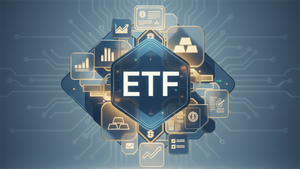
The Dow Jones Industrial Average has been on a roller-coaster ride in November 2025, experiencing significant volatility and sending mixed signals across various sectors. While the index achieved a fresh all-time high earlier in the month, it has since grappled with an "indiscriminating sell-off" fueled by concerns over an "AI bubble" and fluctuating investor expectations regarding the Federal Reserve's monetary policy. This turbulent environment highlights a market caught between robust earnings in specific tech segments and broader economic uncertainties, with the Dow's more value-oriented composition offering a degree of resilience compared to its tech-heavy counterparts.
The immediate implications are a market defined by heightened volatility and a keen focus on the Federal Reserve's next moves. Investors are weighing strong individual corporate performances against widespread valuation concerns, particularly in the AI space, leading to sharp intraday swings and a cautious outlook for several high-growth sectors.
Dow's November Rollercoaster: A Deep Dive into Market Dynamics
November 2025 has proven to be a pivotal month for the Dow Jones Industrial Average (DJIA), marked by a series of dramatic shifts that underscore the prevailing uncertainty in financial markets. The month kicked off with considerable optimism, culminating in the DJIA reaching an unprecedented all-time high of 48,460 points on November 12. This peak was propelled by a significant rally, including a more than 500-point surge on November 11, fueled by hopes for an imminent resolution to a government shutdown and a robust rebound in the healthcare sector.
However, this euphoria was short-lived. The week of November 17 saw an "indiscriminating sell-off," largely triggered by escalating fears of a "bubble bursting" within the Artificial Intelligence (AI) sector, with graphics chip giant Nvidia (NASDAQ: NVDA) at the epicenter. The market experienced extreme turbulence, epitomized by an astonishing 1,115-point intraday swing on November 20. On this day, the Dow initially soared in morning trading before reversing course dramatically to close lower, even as Nvidia reported blockbuster quarterly results. The early Nvidia-led rally faded, pulling down major stock indexes.
Towards the close of the week, on November 21, the Dow managed a late-week rally, gaining 1.1% to settle at 46,245.41. This resurgence was primarily attributed to renewed investor hopes for potential interest rate cuts by the Federal Reserve in December. As of November 24, the Dow saw a modest rise of 0.4%, though it began November 25 with a slight decline before ticking up 0.1% in early trading, contrasting with dips in the Nasdaq and S&P 500. Despite the late-month recovery, the DJIA recorded a loss of -2.3% for November up to the 24th, yet it still outperformed the technology-heavy Nasdaq 100, which lost -3.8% over the same period. Year-to-date as of November 21, 2025, the Dow Jones Industrials had posted a respectable return of 10.3%.
Key players and stakeholders involved in these market movements include major institutional investors reacting to earnings reports and macroeconomic data, individual traders navigating extreme volatility, and, crucially, the Federal Reserve, whose signals on monetary policy are closely watched. The immediate market reaction has been one of heightened caution, with a quick shift from buying to selling, indicating that "volatility is the New Normal" for investors.
Companies Navigating the Crosscurrents: Winners and Losers
The recent market dynamics, characterized by AI bubble concerns and shifting monetary policy expectations, have created a distinct bifurcation in performance across public companies. While some sectors and individual stocks within the Dow have demonstrated resilience or even thrived, others, particularly in the high-growth technology space, have faced significant headwinds.
On the winning side, the Dow's more value-oriented components have shown relative strength. Healthcare giants like Merck & Co. (NYSE: MRK) and Amgen Inc. (NASDAQ: AMGN) demonstrated strong gains earlier in November, benefiting from a perceived flight to quality and stable earnings. Consumer staples and retail, often considered defensive plays, also provided bright spots. Walmart Inc. (NYSE: WMT), for instance, saw its shares jump by 6.5% on November 20 after reporting better-than-expected earnings and raising its fiscal 2026 outlook. This performance highlights how companies with solid fundamentals, consistent profitability, and reasonable valuations can attract investors even during periods of broader market jitters. The outperformance of the Dow compared to the Nasdaq 100 underscores this trend, suggesting that investors are currently favoring established companies with stable cash flows over highly speculative growth stories.
Conversely, the technology and AI sectors have borne the brunt of the "indiscriminating sell-off." Nvidia (NASDAQ: NVDA), despite delivering stellar third-quarter results and optimistic guidance, experienced significant declines after an initial surge. The company's stock, a bellwether for the AI boom, faced pressure due to concerns over "lofty valuations" and the sustainability of the AI rally. Other semiconductor companies and high-growth tech firms have also seen their valuations questioned, leading to substantial pullbacks. The news on November 25 that Meta Platforms (NASDAQ: META) might use Google's (NASDAQ: GOOGL) AI chips further rattled semiconductor shares, indicating increased competition and potential margin pressures. While analysts suggest that the drawdown in the IT sector could be a "healthy correction" rather than a prolonged downturn, driven by robust underlying earnings momentum, the immediate impact has been negative for many companies heavily invested in or valued purely on AI growth prospects. This scenario forces these companies to justify their high valuations with sustained, exceptional performance, and any hint of competition or market saturation can trigger rapid de-risking by investors.
Wider Significance: Beyond the Daily Swings
The Dow Jones' recent volatility and the divergence between sectors extend beyond daily trading fluctuations, signaling deeper trends and potential shifts in the broader economic and regulatory landscape. This period of market turbulence fits into a larger narrative of investor re-evaluation, where the exuberance surrounding specific technological advancements, particularly AI, is being tempered by fundamental economic realities and historical precedents.
One significant broader industry trend is the potential unwinding of the "AI bubble." While AI's transformative potential remains undeniable, the rapid surge in valuations for companies like Nvidia has drawn comparisons to past tech bubbles. The "indiscriminating sell-off" in AI-related stocks suggests that investors are becoming more discerning, moving away from a blanket enthusiasm towards a more selective approach based on tangible profitability and sustainable business models. This could lead to a healthier, albeit slower, growth trajectory for the AI sector as the market matures and distinguishes between genuine innovation and speculative hype. The "two economies" narrative – one booming AI sector and a struggling "everything else" – also highlights a potential imbalance, making the broader market's health more dependent on external factors like Federal Reserve policy.
The ripple effects on competitors and partners are already evident. Companies heavily reliant on AI technology or those in the semiconductor supply chain are experiencing increased scrutiny. For instance, the news about Meta potentially diversifying its AI chip suppliers could pressure other chipmakers, intensifying competition and potentially impacting pricing power. Furthermore, the broader market's focus on value stocks during this period could divert capital away from early-stage, high-growth tech ventures, potentially slowing innovation in areas not immediately profitable. Regulatory or policy implications could also emerge if the "AI bubble" concerns escalate. Governments might consider measures to ensure market stability or address anti-competitive practices if a few dominant players are perceived to control too much of the AI infrastructure.
Historically, periods of rapid technological advancement have often been followed by market corrections, as seen with the dot-com bubble of the late 1990s. While the current situation is distinct, the cautionary tales from the past remind investors that even revolutionary technologies can be subject to irrational exuberance. The current environment, with its mixed economic signals (e.g., higher job additions but rising unemployment, mixed retail sales), further complicates the picture, forcing the Federal Reserve to walk a tightrope between controlling inflation and supporting economic growth.
What Comes Next: Navigating the Future Landscape
Looking ahead, the financial markets, and particularly the trajectory of the Dow Jones, will be shaped by a confluence of short-term and long-term factors, demanding strategic pivots and adaptation from investors and corporations alike. The immediate future is likely to be characterized by continued volatility, driven primarily by evolving expectations around the Federal Reserve's monetary policy and the ongoing re-evaluation of technology valuations.
In the short term, the market's primary focus will remain on the Federal Reserve. The high probability of a quarter-percentage point rate cut at the December meeting, as indicated by the CME FedWatch tool, suggests that any deviation from this expectation could trigger significant market reactions. Positive signals from the Fed, such as those from the New York Fed President supporting near-term rate adjustments, will likely fuel further rallies, particularly in sectors sensitive to interest rates. Conversely, any hawkish surprises could lead to renewed sell-offs. Companies will need to adapt to a potentially lower interest rate environment, which could ease borrowing costs but also signal underlying economic weakness. Strategic pivots might involve deleveraging or re-evaluating capital expenditure plans to align with changing economic conditions.
For the long term, the "AI bubble" narrative will continue to play out. While a full-blown crash is not guaranteed, a sustained period of valuation adjustment and more selective investment in AI companies is probable. This presents both challenges and opportunities. Companies that can demonstrate clear pathways to profitability and sustainable competitive advantages in AI will likely emerge stronger, while those built on speculative growth without solid fundamentals may struggle. This could also lead to consolidation within the AI sector. Market opportunities may emerge in overlooked value stocks, particularly within the Dow's industrial and healthcare components, which offer stable returns and attractive dividends. Challenges include navigating a potentially slower global economic growth environment and managing supply chain disruptions.
Potential scenarios include a "soft landing" where the Fed successfully engineers a mild economic slowdown without triggering a recession, leading to a gradual recovery in market confidence and a more balanced growth across sectors. Another scenario involves a more pronounced economic downturn, forcing the Fed into more aggressive rate cuts, which could initially boost markets but also signal deeper economic woes. Investors should prepare for diversified portfolios, focusing on companies with strong balance sheets, consistent earnings, and clear growth strategies, rather than chasing speculative trends.
MarketMinute Wrap-Up: Key Takeaways and Future Watch
The recent performance of the Dow Jones Industrial Average paints a clear picture of a market in flux, grappling with the complexities of technological innovation, economic indicators, and monetary policy. The key takeaway from November 2025's tumultuous trading is the pervasive theme of volatility and the stark divergence in performance between the high-flying technology sector and the more stable, value-oriented components of the Dow. While the "AI bubble" fears have prompted a significant re-evaluation of tech valuations, the resilience shown by certain Dow components underscores the enduring appeal of fundamental strength and consistent profitability.
Moving forward, the market will remain acutely sensitive to signals from the Federal Reserve regarding interest rate policy. The expectation of potential rate cuts in December has been a crucial driver of recent rallies, and any shift in this outlook could trigger considerable market movements. Investors should also continue to monitor the evolution of the "AI bubble" narrative; a "healthy correction" could pave the way for more sustainable growth in the sector, but sustained valuation concerns could lead to further turbulence. The Dow's medium-term uptrend appears intact, suggesting a potential outperformance of value-heavy indices in the coming months.
The lasting impact of this period will likely be a more discerning investment landscape, where capital is allocated more carefully based on proven business models and clear pathways to profitability, rather than speculative hype. What investors should watch for in the coming months includes the Federal Reserve's actual decisions on interest rates, the earnings reports from key technology companies for signs of sustained growth or further slowdowns, and broader economic data such as inflation figures and employment reports. A watchful eye on intermarket signals, such as bond yields and currency movements, will also provide valuable insights into the market's underlying health and future direction.
This content is intended for informational purposes only and is not financial advice




